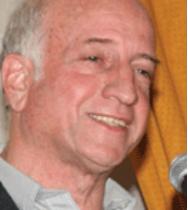Until now, the chief scientist approved in 2009, in these two tracks, about 40 projects, a broad request of technological fields

One of the main principles that Dr. Eli Ofer, the Chief Scientist at the Ministry of Science and Technology, placed at the top of his priorities is the tightening of mutual ties between academia and industry. Two of the important tracks in the Office of the Chief Scientist that apply this principle are "Magneton" and "Nuper", which are managed as part of the magnet program operating in the office, and whose purpose is to encourage the direction of academic research products for the benefit of industry in Israel.
In 2009, the scientist approved about 40 projects in these two tracks, a broad application of technological fields. Among the projects can be seen the metal technologies that help the traditional industry, such as the collaboration between the company "Tirosh-Zitzikot" and a research group from the Ariel University Center, in the development of technologies to improve the mechanical properties of aluminum by means of nanometric materials. Another collaboration is between Tcham Afikim and two research groups from the Hebrew University and Tel Aviv University, for the development of an automatic mechanism for progesterone in milk.
Additional examples of academic-industry collaborations:
- Technologies from the communications field of companies such as "Rancom" and ECI, with two different research groups from Ben-Gurion University to handle advanced communications networks.
- Technologies from the cleantech field of the "Vortex Technologies" company with a research group from the Technion for cleaning particles of industrial pollutants.
- Other technological areas dealt with in this framework are simulators for training, instruction and/or development purposes intended for HLS.
The total budget approved so far in 2009 for the magneton track is about NIS 20 million.
In the "Nofer" track, designed to bridge the gap between basic research and applied research in the fields of biotechnology, nanotechnology and integrated technologies, a variety of topics have been approved and most of the university research institutions and medical centers are partners.
Among the approved projects are:
- Prof. Smith's research from the Hebrew University, directed and accompanied by the KOVAX company, to develop a kit for predicting response to interferon in jaundiced patients.
- Prof. Tab's research, guided and accompanied by the Teva company for the development of small molecules as drugs for the treatment of cystic fibrosis and other diseases.
The director of the magnet program, Ilan Peled, noted that over 350 different researchers from academic research institutions in Israel were involved in these two tracks in recent years.
Although not all the requests were approved, in each of them an academic-industry interface was created, something that teaches about the great wealth and potential inherent in academic research, which can be reflected in Israeli industry.
Dr. Eli Ofer said that he sees the "Magneton" and "Nofer" tracks as an important layer in the implementation of mutual relations between academia and industry in Israel. The successful collaboration, he noted, also continues in the scientist's other plans.
